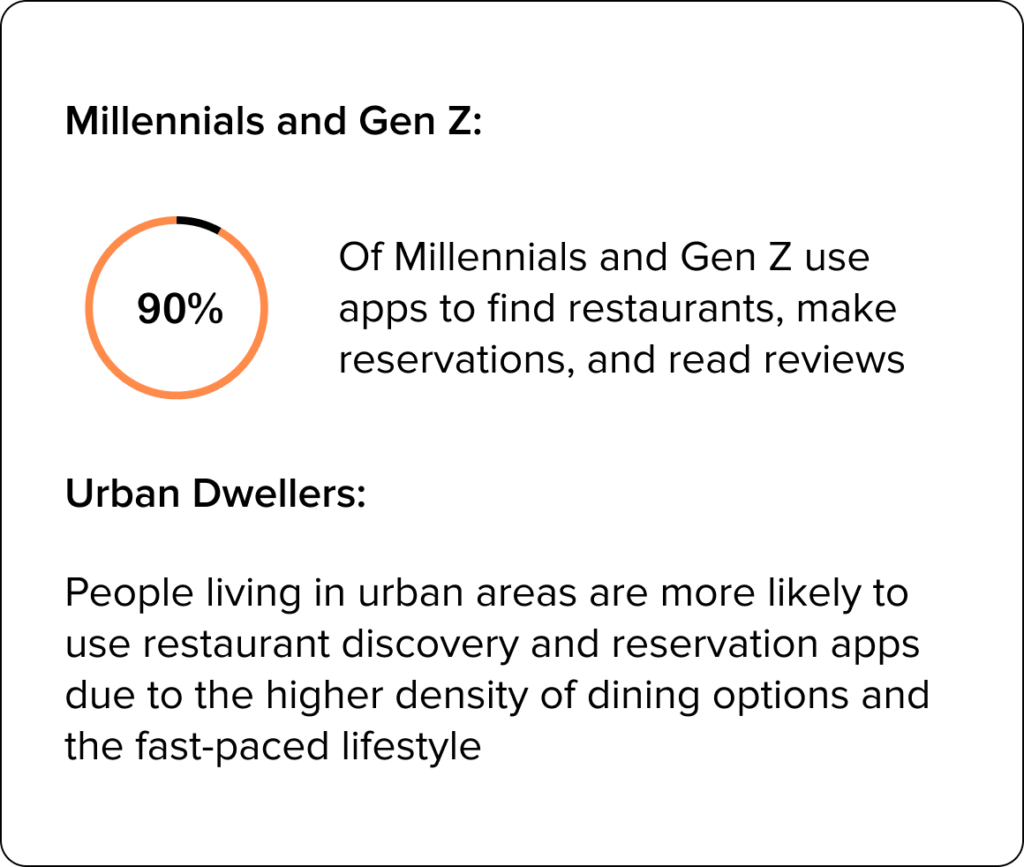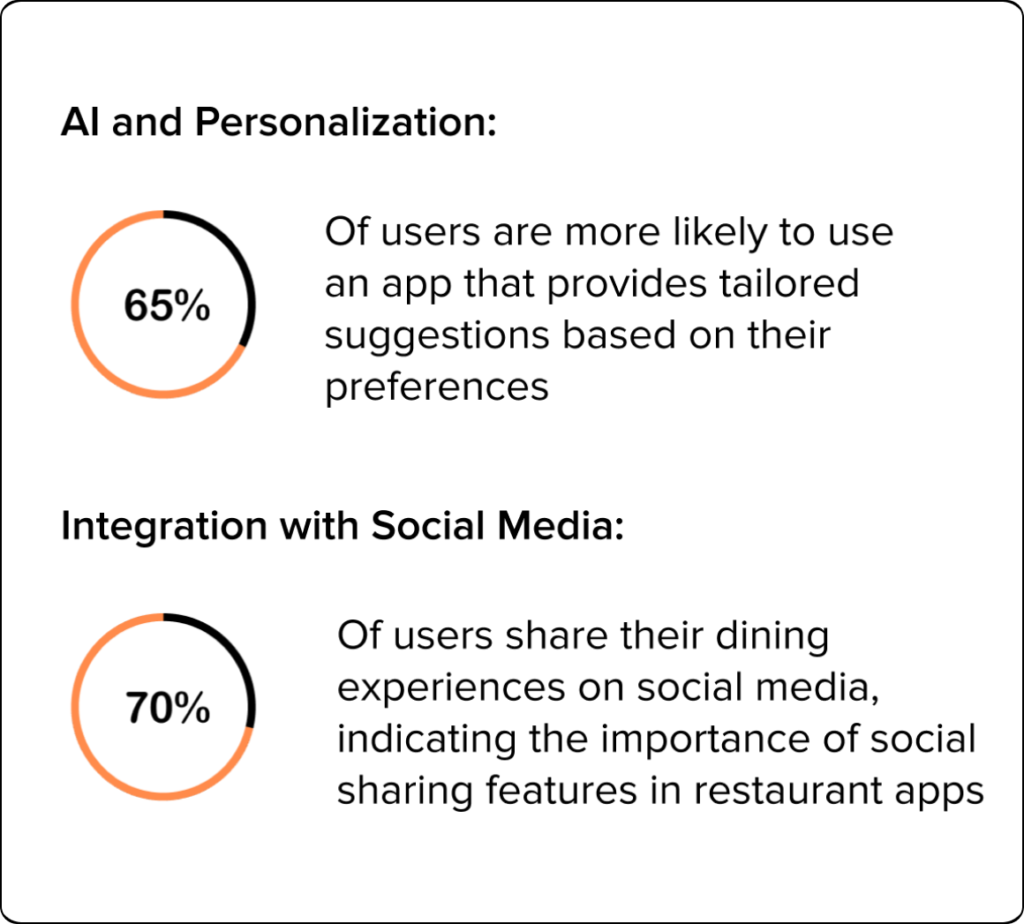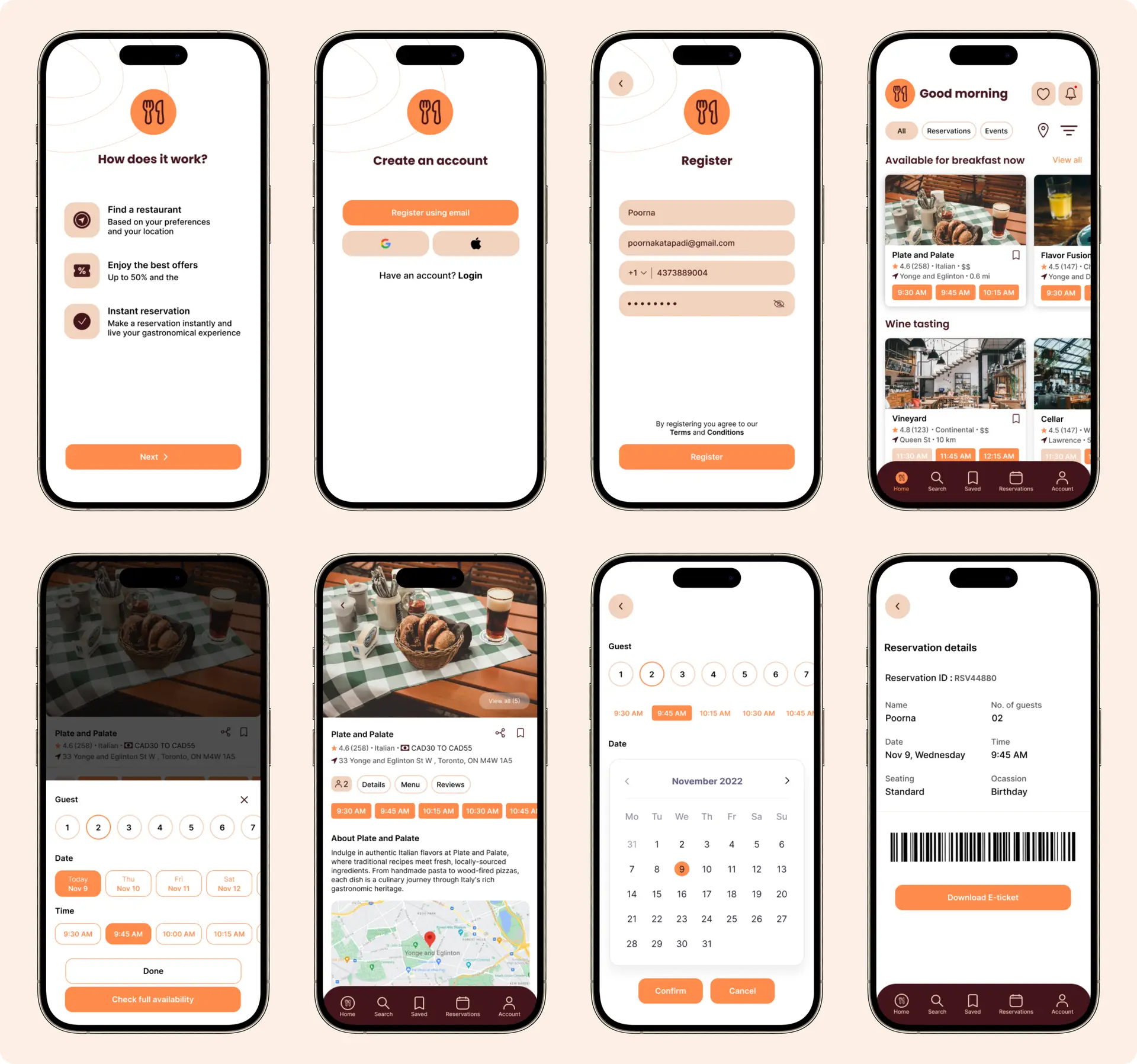Eatsy

Eatsy is an AI-powered mobile app that personalizes restaurant discovery, reservations, and reviews based on user preferences and location.
Objective
The objective of Eatsy is to simplify and enhance the dining experience for users by:
- Providing personalized restaurant recommendations based on individual preferences and location.
- Streamlining the reservation process will make booking a table quick and convenient.
- Integrating user reviews and social sharing features to foster a community of food enthusiasts.
- Reducing the time and effort involved in deciding where to eat by offering reliable and tailored options.
Introduction
Eatsy is an innovative mobile application developed to transform the way users discover, book, and experience dining at restaurants. Eatsy leverages advanced AI technology to provide personalized restaurant recommendations, streamlined reservation processes, and a platform for sharing and reviewing dining experiences.
Problem Statement
Modern diners face challenges in discovering restaurants that suit their specific tastes and preferences. The overwhelming number of options, combined with a lack of personalized recommendations, makes it difficult for users to find and decide on where to eat. Additionally, managing reservations, reviews, and dining experiences across different platforms is cumbersome and inefficient.
Solution
Eatsy is an AI-powered mobile application designed to revolutionize the dining experience by providing personalized restaurant recommendations, seamless reservation management, and integrated review functionalities. By leveraging advanced algorithms, Eatsy tailors its suggestions to individual user preferences and location, simplifying the decision-making process and enhancing the overall dining experience.
Research
I began by analyzing the competitive landscape, researching the market, and developing ideas for Eatsy.
Restaurant Reservation Systems Market: The global restaurant reservation systems market was valued at around USD 5.5 billion in 2021 and is expected to grow at a CAGR of 12% from 2022 to 2027

User behavior

Demographics

Technological Trends

Financial Insights

Competitor Analysis

Key Findings
Eatsy’s competitive advantage lies in its advanced AI-driven personalized recommendations and seamless integration of discovery, reservations, and reviews. Unlike its competitors, Eatsy focuses heavily on tailoring the dining experience to individual user preferences, making it stand out in a crowded market. By addressing the pain points of overwhelming choices and disorgranized reservation systems, Eatsy offers a streamlined and user-centric solution that enhances every aspect of dining out.
Define
User Persona
I created a user persona that helps in visualizing an ideal user, making it easier to tailor the design and features of the Eatsy app to meet the specific needs and behaviors of the target audience.

Ideation
Based on user personas and research, I identified key user goals and needs for the Eatsy app. By focusing on these specialized features, Eatsy can provide a more enriched, engaging, and tailored experience for users specifically looking for dining options, setting it apart from the more general-purpose Google Maps.
User flow
The flow provides an onboarding process, allowing you to navigate the home screen from browsing their restaurants to booking reservations, making it accessible and enjoyable for users.

Wireframe
I created wireframes for each screen in the user journey to visualize the flow and layout. This included:
- Simple and clear onboarding screens to guide new users.
- A clean and intuitive home screen with easy navigation.
- Detailed pages with all the necessary information and controls.

Onboarding:
- Welcome Screen: Brief introduction to Eatsy’s features.
- Sign-Up/Login: Users can sign up via email, Google, or Apple accounts. Existing users can log in.
Home Screen:
- Personalized Recommendations: Display a curated list of restaurant recommendations based on user preferences and location.
- Search Bar: Users can search for specific restaurants, cuisines, or locations.
- Navigation Menu: Access to different sections such as saved, search, reservations, and profile.
Discover Restaurants:
- Filters: Apply filters for cuisine type, price range, distance, and more.
- Restaurant Profiles: View detailed profiles with photos, menus, user reviews, ratings, and operational hours.
Detailed Restaurant View:
- Menu: Detailed menu with prices and descriptions.
- Reviews: Read user reviews and ratings, see photos uploaded by diners.
- Location: Map and directions to the restaurant.
- Reservation Button: Easy access to book a table directly from the restaurant’s profile.
Making Reservations:
- Choose Date and Time: Select preferred date and time for the reservation.
- Guest Details: Input number of guests and any special requests or preferences.
- Confirmation: Receive confirmation of the reservation with details via app notification and email.
Reviews and Social Sharing:
- Post-Dining Prompt: After dining, users receive a prompt to leave a review.
- Write a Review: Rate the restaurant, write a review, and upload photos.
- Share Experience: Option to share the review and photos on social media platforms.
Profile Management:
- User Profile: View and edit personal details, dining preferences, and app settings.
- Reservation History: Access past and upcoming reservations.
- Favorites: Manage a list of favorite restaurants for quick access.
Notifications and Rewards:
- Push Notifications: Alerts for reservation reminders, special offers, and personalized recommendations.
- Loyalty Program: Track points and rewards for frequent use and dining, redeemable for discounts or special offers.
UI Kit

Final Design

Prototype
Reflection
Key learnings emphasize the importance of understanding user needs. By integrating personalized recommendations, easy search and filtering, detailed restaurant profiles, and a straightforward reservation system, Eatsy ensures a smooth and enjoyable user experience.
Creating a detailed user persona, like Sarah, provided deep insights into the specific needs and challenges faced by our target audience. This approach ensured that the app’s features and design were aligned with the actual problems users encountered, making the solution both relevant and practical.
The emphasis on a visually appealing and intuitive interface reinforced the importance of design for user adoption and satisfaction. A clean, easy-to-navigate app not only attracts users but also retains them by making their interactions pleasant and straightforward.
